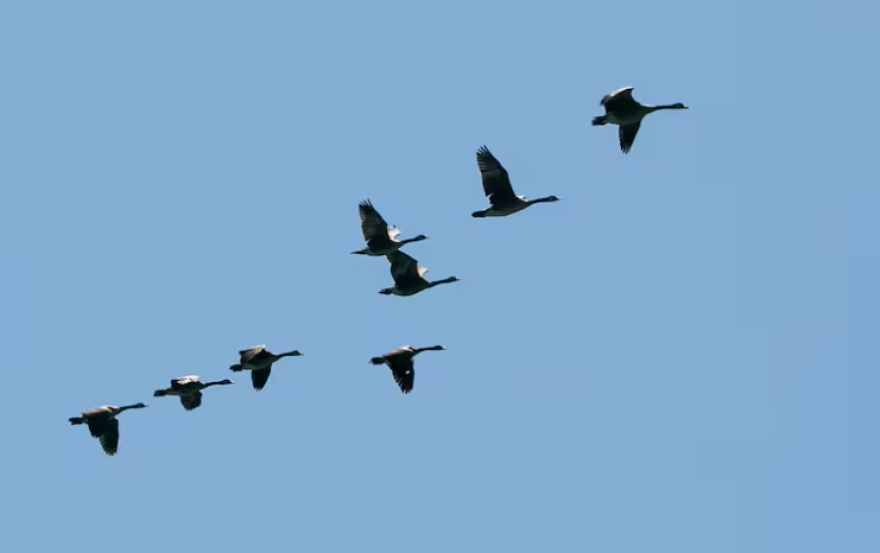Every spring, Oregon birders break out their binoculars to catch glimpses of colorful migrating birds.
But this year, something was off. The trees and skies were unusually empty.
“They just weren’t there,” said Brodie Cass Talbott, an engagement manager with the Bird Alliance of Oregon.
Cass Talbott leads group birdwatching walks around the Portland area every spring.
“When in the past, on a birdsong walk on Mount Tabor, you might come across five or six Nashville warblers, this year there were zero,” Cass Talbott said.
So he turned to national data aggregated by academic researchers, including some from the Cornell Lab of Ornithology. The lab helps run BirdCast, which uses weather radar to track bird migration patterns, and eBird, a citizen science project where birders can document what they see on the ground.
That data appears to confirm what Cass Talbott and other local birders suspected: The number of birds migrating through Oregon this spring declined drastically compared to years past.
Between April and May, 43 million birds migrated through Oregon, 47% fewer than the same time last year. That’s according to BirdCast numbers that Cass Talbott analyzed for the Bird Alliance of Oregon.
Across the country, most bird species are struggling with habitat loss, as humans encroach on the forests, prairies and wetlands that they rely on.
Droughts and rising temperatures resulting from climate change are also a factor. About two-thirds of North American bird species are at increasing risk of extinction due to global temperature rise, according to the National Audubon Society.
While migrating bird numbers have been steadily declining, this year’s numbers are drastic enough to suggest something recently hit them hard.
Colby Neuman, a meteorologist with the National Weather Service in Portland and a local bird enthusiast, points to weather patterns in southwestern states, where Oregon’s migrating birds spend their winters.
“This past winter, they had one of their driest winters on record,” Neuman said. “They don’t normally get that much rain, but they got way less than even what’s normal for them.”
According to the weather data Neuman analyzed, Phoenix, Arizona, had its third driest winter since 1895. San Diego had its second driest winter.
Neuman suspects that states in Mexico also experienced severe drought.
“If they don’t get those rains, then nothing’s growing come springtime when then the birds are moving through that region,” Neuman said.
That means migrating birds won’t have the plants or insects that they need to survive their long journeys northward.
Neuman hopes this pattern is just a one-off, and that migrating birds will rebound next year.
“We take for granted that birds come and go during the seasons, but they are extremely dependent on the weather,” he said.
There are things Oregonians can do to help struggling bird species, even when weather isn’t working in the avians’ favor.
“There’s also a lot that we can do as individuals to help reduce the hazards for birds, including turning off lights during migration, keeping our cats indoors, planting native plants,” Cass Talbott with the Bird Alliance of Oregon said.
“We should use it as a call to action instead of a reason to despair.”
This story comes to you from the Northwest News Network, a collaboration between public media organizations in Oregon and Washington.



